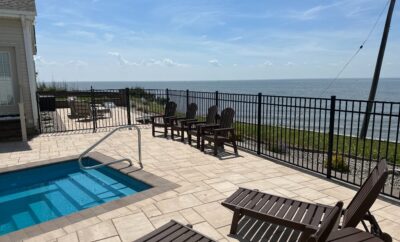Cape May Historic District
The National Register of Historic Places designated Cape May a National Historic Landmark District in 1976.
Cape May is known for its historic and varied architecture. Cape May contains over 600 homes, old hotels, and commercial structures that make it an excellent study in architectural building
Cape May was discovered by Sir Henry Hudson on August 28, 1609. He entered Delaware Bay and landed a few miles north of Cape May Point. The City of Cape May is known as the oldest Sea Shore resort in America. Long before the first Europeans explored the coast of the New World, Cape May County was inhabited by a branch of the Lenni-Lenape tribe of Indians.
Cape May was named for Cornelius Jacobson Mey, a Dutchman representing the Dutch West India Company. Mey explored this coast in 1621. Shortly after his visit, in May of 1630, Samuel Godyn and Samuel Blommaert representing the same company, made the first land purchase in the county. They bought from the Indians a tract 4 miles along the bay from Cape May Point northward and 12 miles inland. A New Netherlands colony was firmly established. In 1632 Davi Pieterson DeVries, an eminent seaman became the first resident patroon land owner in Cape May. He was to establish a fishing industry, particularly that of whaling. In 1638 English colonists from New England migrated to expand the whaling industry and Town Bank (or Cape May Town) was founded. The English assumed control of the area in the 1660’s.
While Cape May flourished as a resort, famous for its atmosphere and entertainments, a number of famous hotels were constructed — in 1853, the Mount Vernon — then the largest hotel in the world. It burned in September 1856. The United States Hotel built in 1843, burned in the disastrous fire of 1867. Since many of these large summer “palaces” were timber, they were vulnerable to fire and the great 1867 fire leveled two city blocks.
Cape May retains a very great number of the buildings of the second half of the 19th century. There is an almost complete showcase of late-Victorian architecture which should be preserved and restored. The so-called eclectic styles so fancied by a new rich America are all here. Most of these buildings were conceived and constructed by the individual carpenter-builder, using textbooks and trade journals. They improvised freely on what they thought were traditional styles — Greek Revival, Gothic, Queen Anne, Italianate, Elizabethan, Eastlake, Mansard, etc., but these borrowings were not historically accurate. Rather, these romantic statements were an architectural vernacular that produced the “Picturesque” style Americans held to be the height of fashion. Many of the buildings in Cape May must have been designed by creative local carpenters using the handbooks of construction that were standard reference. These “pattern books” included designs, costs of material, chatty advice on good taste and had some pretensions as to guides to culture. The parvenu client was anxious to display his wealth in the form of a fine house in the latest fashion. Cape May has a number of excellent examples of the elegant summer residence.
Cape May now protects its most valuable asset, its architecture. Homeowners, businesses, and builders must go before an historic commission whos mandate is to protect the architectural inregrity in each building.

